
How Long Does it Take to Walk the Camino? All Routes
Posted: | Updated:
Reading time: 18 minutes
How Long Does it Take to Walk the Camino? All Routes
Posted: | Updated:
Reading time: 18 minutes
By: Simon Kemp, Editor
How long does it take to walk the Camino? First a bit of background. Skip to the timings section below if you want to get straight to the answers!
The Camino de Santiago, also known as the Way of St. James is a journey that will touch your heart and soul, the Way of St. James is the pilgrimage for discerning and introspective travelers. This famous route has been drawing pilgrims from all around the world for centuries, and for the very best reasons.
As you hike along this time-trodden and sacred path, you’ll be immersed in a world of ancient tradition, history, and spiritual significance. The stunning landscapes, medieval villages, and cathedral will provide enough inspiration for a lifetime, but how much time do you need do do this journey?
More than just a scenic walk, the Camino is a chance to connect with something deeper, to seek enlightenment and renewal, to find peace and grace. The Camino de Santiago has been a spiritual journey for millions of pilgrims over the years, and most people have a similarly personal experience.
Let the Camino lead you to a place of discovery, growth, and transformation. Let the Camino de Santiago be your guide to a life-changing experience. Does it really matter how long it takes if the results are so life-changing?!
Key takeaways
- To receive the pilgrim certificate on the Camino de Santiago, you need to walk at least the last 100km into Santiago. This typically takes 5 to 6 days of walking, with an average of 20km per day.
- The most popular and well-known route is the Camino Francés or French Way, which is nearly 800km (500 miles) long. Walking the full Camino Francés from St Jean Pied de Port to Santiago de Compostela would take about 35 days, averaging 25km per day.
- Rest days are common among pilgrims, usually one per week walked, to recover and explore the historic cities and towns along the route. Longer and tougher walking days may be split into two stages.
- Other popular Camino de Santiago routes include the Camino Portugués (Portuguese Way) and the Camino del Norte (Northern Way). Walking the Camino Portugués from Lisbon takes approximately 30 days, while walking from Porto (via the Portuguese Coastal Way) takes about 14 days. The Camino del Norte from San Sebastian takes around 37 days.
- The Camino Inglés (English Way) is one of the shortest routes, spanning just 118km from Ferrol to Santiago. It can be completed in about 1 week.
- The Camino de Santiago offers flexibility, allowing you to start and finish at any point along the routes, depending on the time you have available and your fitness level.
This historic trail spans through picturesque landscapes and has been a spiritual journey for many pilgrims seeking enlightenment, redemption, or simply a sense of adventure.
The Camino winds it’s way through some of the most exceptional landscapes in Europe like the peaks of the Pyrenees and the hills of Galicia. By taking this journey, you can experience the history and tradition that millions of pilgrims have before you. No matter what your reasons are for doing the Camino, it promises to be an unforgettable experience.That alone is worth the time it will take.
Whether you are seeking adventure, spiritual growth, are following an educational Camino program or simply a unique cultural experience, the Camino offers it all.
So, while the Camino de Santiago is undoubtedly the hike of a lifetime, it’s essential to approach it with a clear and analytical mindset. Careful planning means considering your physical fitness, the gear you’ll need, and the route you’ll be taking. This way, you can make decisions that will help you tackle any challenges that the Camino presents.
You can also create a realistic itinerary that allows for rest days, so you don’t get burnt out or discouraged along the way. Then you’ll be able to fully appreciate the magic of the Camino and create lasting memories. Trust me, I’ve seen too many pilgrims caught off guard without the right gear, food or water!
So, take the time to plan and pack, then lace up those boots with confidence. Your feet (and your sanity) will thank you!
But now to the burning question that you all want to know. How long does it take?
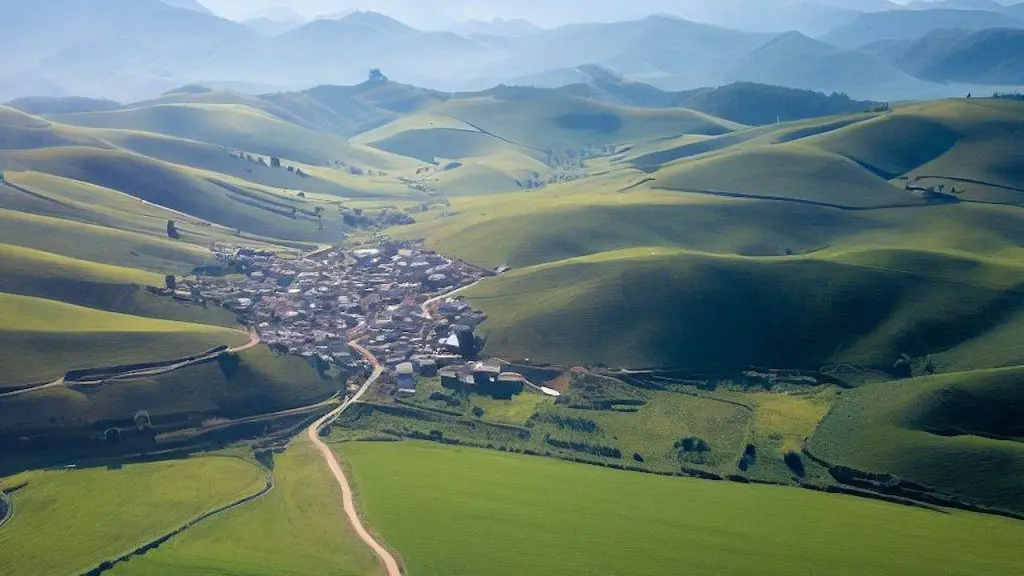
Camino Timings and Distances Table: All Routes
Here is an example of how you might estimate the length of time it would take to walk each of the major routes of the Camino de Santiago, assuming an average pace of about 25 km/day. This is generally considered a moderate pace for a long-distance hiker in good condition.
This table assumes optimal conditions and that hikers would be walking every day without rest. In reality, the number of days it takes to complete these routes may be higher due to factors such as rest days, adverse weather conditions, individual fitness and walking speed, time spent sightseeing, etc.
| Camino Route | Distance (miles) | Distance (km) | Days (average) |
|---|---|---|---|
| Camino Francés | 485 | 780 | 31 |
| Camino del Norte | 512 | 825 | 33 |
| Camino Primitivo | 200 | 321 | 13 |
| Camino Portugués | 380 | 610 | 24 |
| Via de la Plata | 621 | 1000 | 40 |
| Camino Inglés | 74 | 119 | 5 |
| Camino de Finisterre | 56 | 90 | 4 |
| Camino de Madrid | 200 | 322 | 13 |
| Camino Aragonés | 103 | 166 | 7 |
| Camino Vasco del Interior | 76 | 122 | 5 |
Estimated Average Time to Complete the 10 Major Camino de Santiago Routes While we often refer to the Camino de Santiago as a singular entity, in reality it represents a vast network of routes each with its unique path. Timing estimates for completing these routes can vary significantly, largely depending on the chosen route’s length and the individual walker’s pace. In the following table, an average walking pace of about 25 kilometers per day is used as a reference. This pace is considered a moderate pace for a long-distance hiker in good condition, and reflects a steady walk of approximately five to seven hours per day, depending on terrain and individual speed.
However, it’s essential to note that this pace is a broad average and can fluctuate based on several factors. First, individual fitness levels play a crucial role in determining daily walking distances. An experienced and fit hiker might cover more than 25 kilometers per day, while a beginner or someone with less physical conditioning might find 15 to 20 kilometers a more comfortable daily distance.
Additionally, other considerations can impact the daily distance covered. Rest days, for example, are a common practice for long-distance walkers and are not included in our table’s timing estimates. Taking a day off to rest, recover, and explore can greatly enhance the pilgrimage experience, but naturally extends the overall time to complete the route.
Weather conditions are another significant factor that can impact timing. Rain, heat, and wind can all reduce daily walking distances and are more likely to occur on certain routes or at specific times of year. Finally, the Camino de Santiago isn’t just a physical journey, but often a cultural, historical, and spiritual one too. Many pilgrims choose to spend extra time at particular locations along the route, visiting local attractions, historical sites, or simply enjoying the regional cuisine and hospitality.
Thus, while our table provides a helpful baseline for planning purposes, the time it will take you to walk the Camino de Santiago could be less or more depending on these and other factors. The Camino is not a race, but a deeply personal journey. Ultimately, the “right” pace and time to complete it is the one that gives you the most satisfaction and fulfillment.
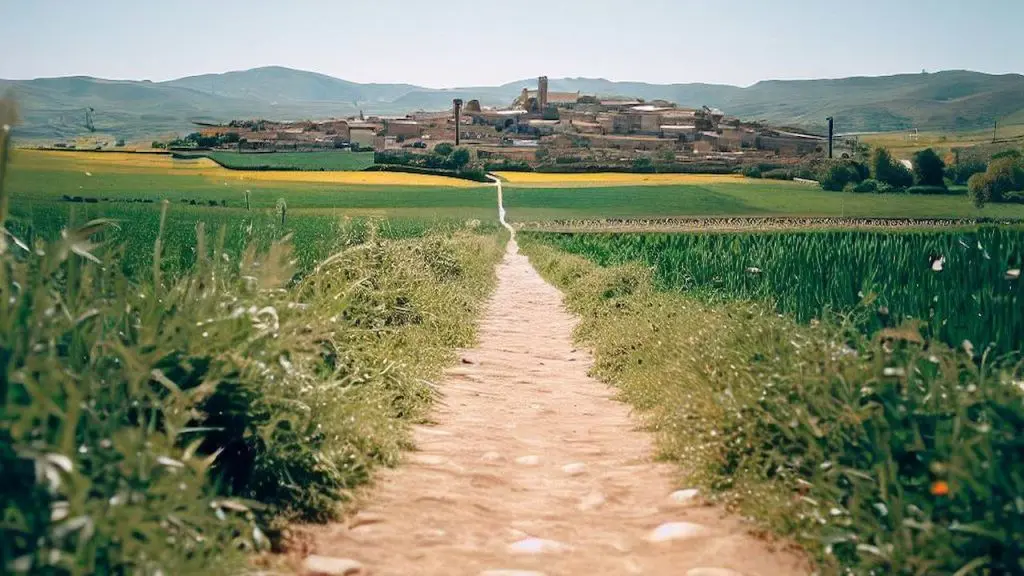
Times to Complete the Camino 4 Most Popular Routes
The average time it takes to complete the Camino de Santiago can vary depending on several factors, including those mentioned below and also your personal preferences. Here’s a breakdown of the average time to complete each route, as well as some factors that may affect completion time and tips for managing time and staying on track.
1. Camino Francés Average Time to Complete
The Camino Francés is the most popular and well-known route, spanning approximately 780 kilometers from Saint-Jean-Pied-de-Port, France, to Santiago de Compostela, Spain. On average, it takes between four to six weeks to complete, walking approximately 20-25 kilometers per day. However, the length of the journey can vary depending on factors such as walking speed, rest days, and the side trips.
Camino Francés Details
- Distance: The Camino Francés spans approximately 780 kilometers, starting in Saint-Jean-Pied-de-Port, France, and ending in Santiago de Compostela, Spain.
- Completion time: On average, it takes between four to six weeks to complete the Camino Francés, walking approximately 20-25 kilometers per day.
- Factors that can affect completion time: It’s important to note that the length of the journey can vary depending on several factors such as walking speed, rest days, and side trips.
- Terrain: The terrain of the Camino Francés is varied, ranging from flat to mountainous, with some challenging ascents and descents.
- Accommodation: The Camino Francés offers a wide range of accommodation options, including albergues (hostels), hotels, and guesthouses.
- Scenery: The Camino Francés offers stunning scenery and passes through charming Spanish villages and historic towns.
- Pilgrim community: The Camino Francés is a popular route, so you’ll have plenty of opportunities to meet fellow pilgrims from all around the world.
The Camino Francés is a challenging but rewarding route that offers an unforgettable experience. Whether you’re a seasoned hiker or a first-time pilgrim, this route is sure to leave a lasting impression.
2. Camino Portugués Average Time To Complete
The Camino Portugués is the second most popular route and begins in Lisbon, Portugal, or Porto, Portugal. The distance of the route varies depending on the starting point, but it typically takes between two to five weeks to complete. The terrain is mostly flat, and the walking distance per day is shorter than on the Camino Francés, making it a good option for those who prefer a less challenging route.
Camino Portugués Details
- Distance: The Camino Portugués can vary in distance depending on the starting point, but it typically spans between 240 to 280 kilometers.
- Completion time: On average, the Camino Portugués is typically completed in between two to five weeks, walking approximately 15-20 kilometers per day.
- Terrain: The terrain of the Camino Portugués is mostly flat, making it a good option for those who prefer a less challenging route. However, there are some hilly sections in the northern part of Portugal.
- Accommodation: The Camino Portugués offers a variety of accommodation options, including albergues, hotels, and guesthouses.
- Scenery: The Camino Portugués passes through scenic coastal towns and historic cities such as Porto and Coimbra.
- Pilgrim community: Although the Camino Portugués is less crowded than the Camino Francés, you’ll still have plenty of opportunities to meet fellow pilgrims from all around the world.
The Camino Portugués is a great option for those looking for a less challenging route that still offers a unique and rewarding experience. With its stunning scenery and rich history, the Camino Portugués is sure to leave a lasting impression on all who walk it.
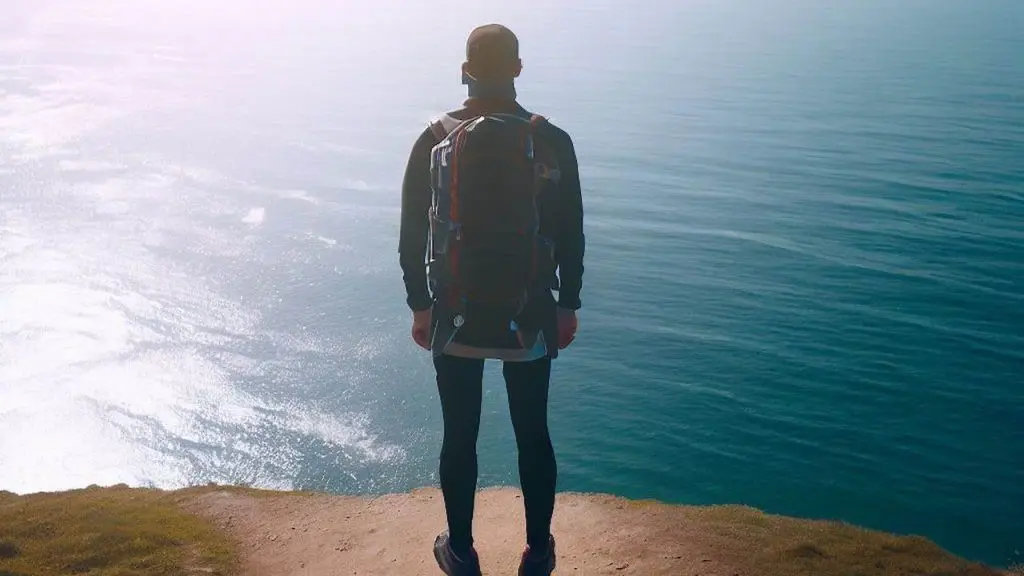
3. Camino del Norte Average Time to Complete
The Camino del Norte starts in Irun, Spain, and follows the northern coast of Spain before merging with the Camino Francés in Arzua. This route is approximately 825 kilometers long and takes between four to six weeks to complete. The terrain is more challenging than on the Camino Francés, with mountainous sections and steep ascents and descents.
Camino del Norte Details
- Distance: The Camino del Norte is approximately 825 kilometers long, starting in Irun, Spain, and following the northern coast of Spain before merging with the Camino Francés in Arzua.
- Completion time: It typically takes between four to six weeks to complete the Camino del Norte, walking approximately 20-25 kilometers per day.
- Terrain: The terrain of the Camino del Norte is more challenging than the Camino Francés, with mountainous sections and steep ascents and descents. However, the coastal scenery is breathtaking.
- Accommodation: The Camino del Norte offers a variety of accommodation options, including albergues, hotels, and guesthouses. However, due to its more remote location, accommodation options may be more limited in some areas.
- Scenery: The Camino del Norte offers stunning coastal scenery and passes through charming Spanish fishing villages and historic towns.
- Pilgrim community: The Camino del Norte is less crowded than the Camino Francés, so you’ll have a quieter and more remote experience. However, you’ll still have plenty of opportunities to meet fellow pilgrims from all around the world.
The Camino del Norte is a challenging yet rewarding route that offers stunning coastal scenery and a more remote experience. With its mountainous terrain and charming Spanish villages, the Camino del Norte is sure to offer an unforgettable experience to all who walk it.
4. Camino Inglés Average Time to Complete
The Camino Inglés, also known as the English Way, is a less traveled route that offers a unique experience. This route is historically significant as it was the preferred route for pilgrims from the British Isles who arrived by boat to the ports of A Coruña or Ferrol in northern Spain.
The Camino Inglés is a shorter route, spanning approximately 120 kilometers, and can be completed in as little as five days. However, its shorter distance doesn’t diminish the incredible beauty and historic significance of the route.
The Camino Inglés Details
- Distance: The Camino Inglés is approximately 116 kilometers long, starting in either Ferrol or A Coruña, Spain, and ending in Santiago de Compostela.
- Completion time: It typically takes between five to six days to complete the Camino Inglés, walking approximately 20-25 kilometers per day.
- Terrain: The terrain of the Camino Inglés is less challenging than other Camino routes, with mostly flat and paved paths.
- Accommodation: The Camino Inglés offers a variety of accommodation options, including albergues, hotels, and guesthouses. Due to its shorter length and fewer pilgrims, accommodation options may be more limited in some areas.
- Scenery: The Camino Inglés offers beautiful rural and coastal scenery, passing through charming Galician villages and historic towns.
- Pilgrim community: The Camino Inglés is less crowded than other Camino routes, so you’ll have a quieter and more intimate experience. However, you’ll still have plenty of opportunities to meet fellow pilgrims from all around the world.
The Camino Inglés is a historic and unique route that offers beautiful scenery and a more intimate experience. With its shorter length and less challenging terrain, the Camino Inglés is a great option for those who want to experience the Camino without committing to a longer journey.
Walkers on the Camino Inglés will pass through charming Galician villages and historic towns, such as Betanzos and Santiago de Compostela, and will have the opportunity to experience the unique culture and customs of this region of Spain.
The Camino Inglés is a great option for those looking for a less crowded and more peaceful Camino experience, as well as those who want to explore the history and culture of the British Isles’ connection to the Camino de Santiago.
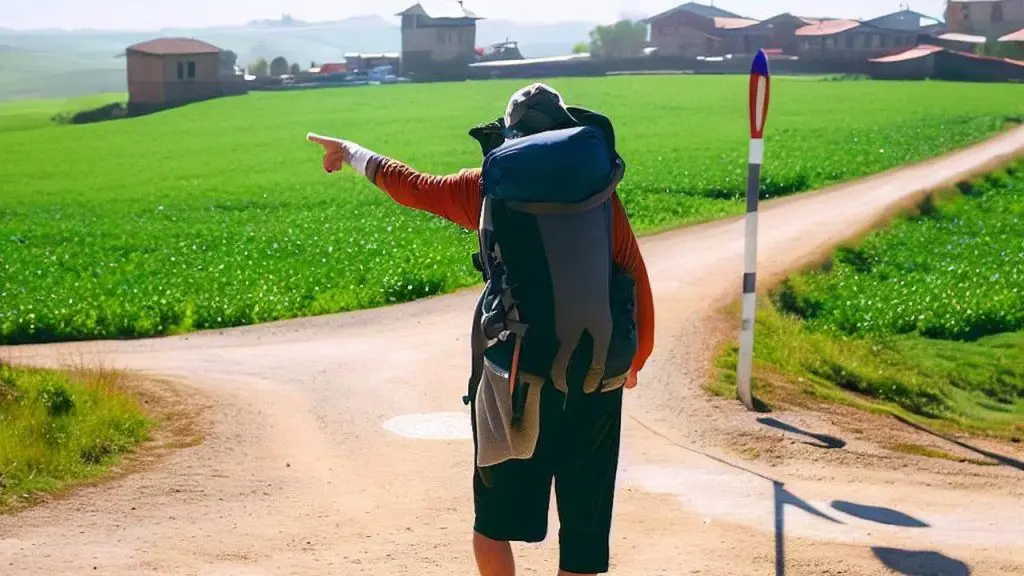
Factors That Affect How Long it Takes to Walk the Camino
Several factors can affect the completion time of the Camino de Santiago. Physical fitness, walking speed, weather conditions, rest days, and side trips can all impact how long it takes to complete the journey. It’s important to factor in these variables when planning your journey to ensure that you have enough time to complete the route comfortably and safely.
Length of the Route
The Camino de Santiago offers several different routes, each with varying distances. The most popular route, the Camino Francés, is approximately 780 kilometers long and typically takes between four to six weeks to complete. Other routes, such as the Camino Portugués and the Camino del Norte, are shorter but still require several weeks to complete. The length of the route can greatly impact how long it takes to walk the Camino, so it’s important to choose a route that fits your time constraints and abilities.
Terrain and Elevation
The terrain and elevation along the Camino can also affect how long it takes to complete the journey. Some routes, such as the Camino del Norte, feature rugged mountain terrain, while others, like the Camino Francés, have more rolling hills and flat sections. Walking up steep hills and mountains can be more challenging and slower, while walking downhill can be faster. It’s important to consider the terrain and elevation when planning your journey to ensure that you are physically prepared for the challenge.
Walking Speed
Walking speed is another important factor that can affect how long it takes to walk the Camino. Your walking speed may be impacted by factors such as your physical fitness level, the terrain, and the weight of your backpack . Generally, the average walking speed on the Camino is between three to five kilometers per hour. However, it’s important to find a comfortable pace that works for you to avoid fatigue and injury.
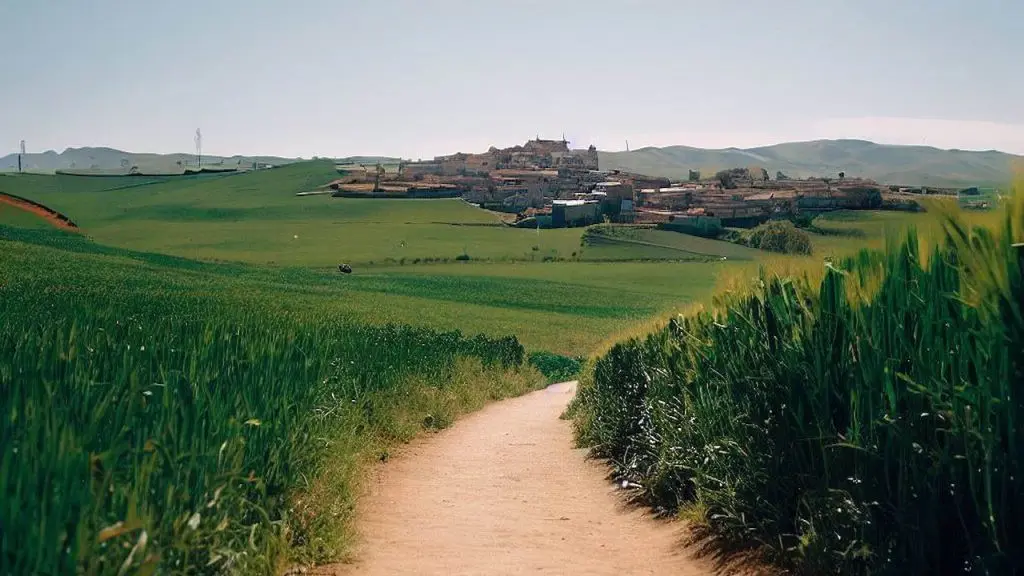
Time of Year and Weather Conditions
The time of year and weather conditions can also impact how long it takes to complete the Camino. The summer months can be hot and crowded, while the winter months can be cold and rainy. Walking in extreme weather conditions can slow down your pace and increase the risk of injury or illness. It’s important to research the weather patterns along your chosen route and pack appropriate clothing to stay comfortable and safe.
Understanding the factors that can affect how long it takes to walk the Camino de Santiago is essential for proper planning and preparation. By considering the length of the route, the terrain and elevation, walking speed, and time of year and weather conditions, you can plan a successful journey that fits your abilities and preferences
Tips for Managing Time and Staying on Track
To manage your time and stay on track during the Camino de Santiago, it’s helpful to establish a daily routine and set achievable goals for each day. Start early in the morning to take advantage of cooler temperatures and avoid crowds.
Plan your route and accommodation in advance to avoid wasting time searching for a place to stay. Take rest days as needed to allow your body to recover and avoid burnout. Managing your time effectively and staying on track during the Camino de Santiago can make all the difference in your overall experience. Here are some helpful tips to ensure you make the most of your journey:
Establish a Daily Routine
Establishing a daily routine can help you stay on track and ensure you’re making progress towards your goals. Here are some suggestions:
- Wake up early: Starting your day early will give you a head start on your walking, allowing you to take advantage of cooler temperatures and avoid the crowds.
- Plan your breaks: Plan breaks at regular intervals to rest, refuel, and recharge.
- Set realistic goals: Set achievable goals for each day to help keep you motivated and on track.
Plan Your Route and Accommodation
Planning your route and accommodation in advance can save you time and prevent unnecessary stress. Consider the following:
- Research your route: Study the route you’ll be taking and take note of key landmarks, distances, and terrain.
- Plan your accommodation: Look for lodging options that align with your budget and preferences. Consider booking in advance to ensure availability.
Take Rest Days
Taking rest days is essential for allowing your body to recover and prevent burnout. Here are some tips:
- Listen to your body: Pay attention to any aches, pains, or signs of fatigue, and adjust your schedule accordingly.
- Plan rest days: Plan rest days in advance to give yourself something to look forward to and prevent overexertion.
- Take advantage of the downtime: Use your rest days to explore your surroundings, practice self-care, or engage in other non-physical activities.
By following these tips, you can effectively manage your time and stay on track during the Camino de Santiago, helping you to make the most of this incredible journey.
Frequently Asked Questions (FAQ’s)
Q1: How long does it take to complete the Camino de Santiago?
The duration of the Camino varies based on several factors such as the route, walking speed, rest days, and side trips. On average, it takes between four to six weeks to complete the most popular route, the Camino Francés, walking approximately 20-25 kilometers per day.
Q2: What is the average daily walking distance on the Camino?
The average daily walking distance on the Camino varies from 15 to 30 kilometers, depending on the individual’s fitness level and personal preferences.
Q3: Which Camino route takes the longest to complete?
The Camino del Norte is the longest route, taking approximately four to six weeks to complete.
Q4: Can I take breaks or rest days during the Camino?
Yes, taking breaks and rest days is recommended to prevent burnout and allow the body to recover.
Q5: How much time should I plan for side trips and exploring towns along the way?
The amount of time allocated for side trips and exploring towns depends on the individual’s preferences and schedule. It’s essential to balance exploration with rest and walking time.
Q6: What is the impact of weather conditions on the duration of the Camino?
Weather conditions can impact the duration of the Camino, particularly during winter months when snow and rain can cause delays or closures of certain routes.
Q7: How does physical fitness affect completion time?
Physical fitness plays a significant role in the completion time of the Camino. It’s recommended to train and prepare physically before embarking on the journey.
Q8: How much time should I allocate for obtaining stamps on my Pilgrim Passport?
Obtaining stamps on the Pilgrim Passport can be done at various locations along the Camino and typically takes only a few minutes.
Q9: What is the impact of carrying a heavy backpack on completion time?
Carrying a heavy backpack can impact completion time and cause fatigue. It’s recommended to pack lightly and only bring essential items.
Q10: Is it possible to walk the Camino at a faster pace to complete it in a shorter duration?
While it is possible to walk the Camino at a faster pace, it’s essential to prioritize rest and avoid overexertion to prevent injury and burnout.
